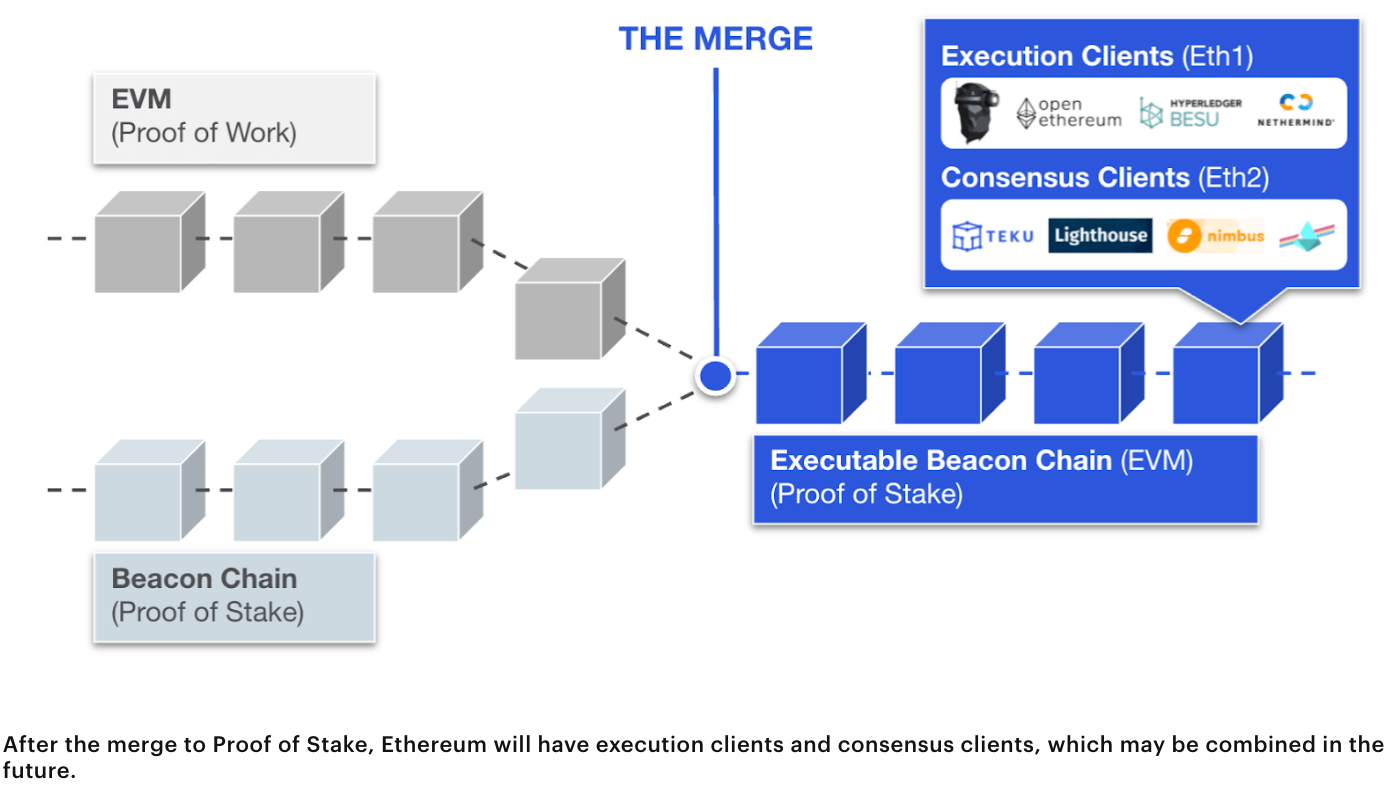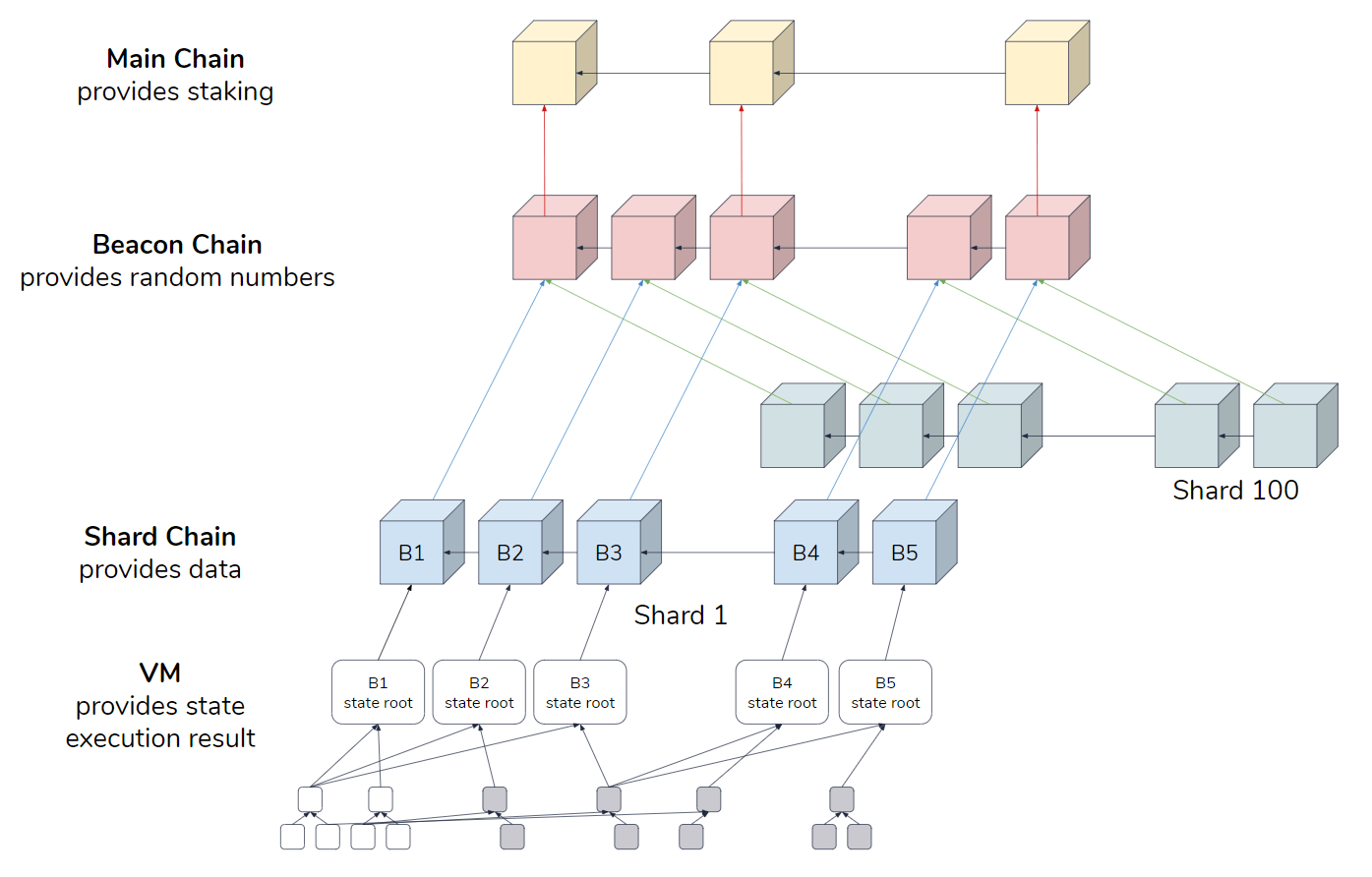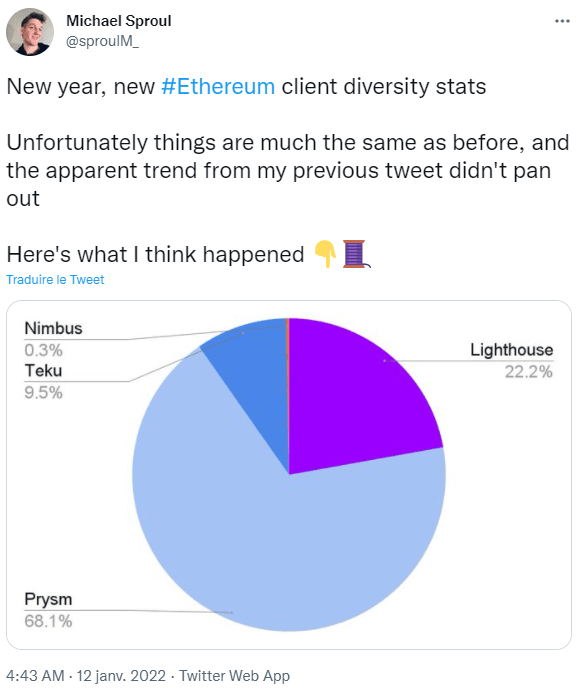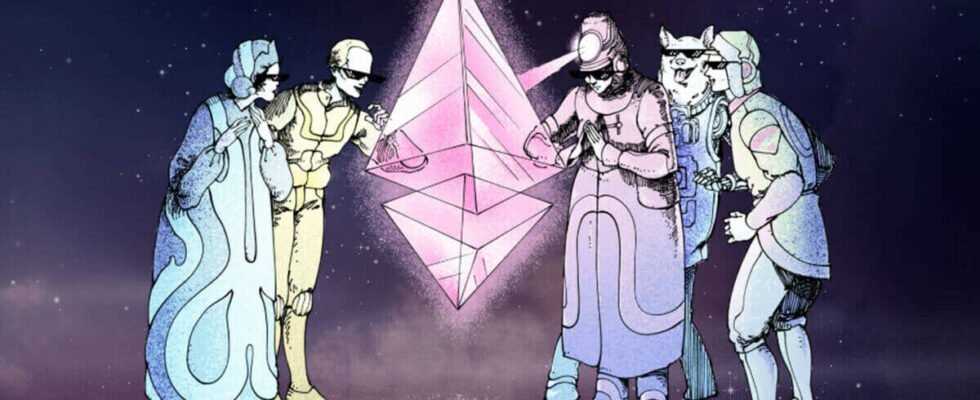Ethereum developers recently announced the fateful date for the transition to Proof of Stake. An update extremely awaited by the community and which will mark a turning point in the deployment of Ethereum 2.0. However, the lack of diversification in the clients used on Ethereum 2.0 worries some players in the ecosystem.
Ethereum 1.0 facing congestion
Launched in 2015, the network Ethereum has been the cradle of many innovations in recent years. Originally, Ethereum stood out with its concept of smart contracts. These contracts allow developers to program complex transactions and behaviors on the blockchain.
It is the latter that have enabled the emergence of complex ecosystems, such as decentralized finance (DeFi) or NFTs. This innovative emulsion has attracted thousands of users. Thus, between January 2020 and January 2022, the number of unique addresses on Ethereum was doubled.
Who says more users, says more transactions. As of January 2020, the number of daily transactions on Ethereum has steadily increased. Since July 2020, this has only very rarely fallen below one million.
Unfortunately, as it stands, the Ethereum network is not equipped to handle that many transactions. This enthusiasm has led to significant congestion problems, implying de facto a proportional increase in fees of transactions.
In addition, this has made Ethereum extremely unattractive for small portfolios, seeing their returns swept away by gas fees.
Ethereum 2.0: the long-awaited solution
Several solutions have been devised to solve the congestion problems encountered by Ethereum. We can cite in particular the various second layer solutions (layers 2), making it possible to deport part of the transactions outside the main blockchain.
In parallel, a major update aims to solve this problem once and for all: Ethereum 2.0. In practice, Ethereum 2.0 corresponds to a series of updates aimed at solving the scaling problem encountered by Ethereum. Thus, Ethereum 2.0 breaks down into three major phases.
Phase 0: the Beacon Chain
Phase 0 refers to the deployment of the Beacon Chain. In short, the Beacon Chain represents the spine from Ethereum 2.0. It is what provides one of the most fundamental functionalities: consensus.
Thus, the Beacon Chain is a blockchain in Proof of Stake, evolving in parallel with the Ethereum network as we know it, often referred to as “Ethereum 1.0”.
This was launched in December 2020, and accounts for more than 280,000 active validators, a number that is growing day by day.

The Beacon Chain will also be the synchronization place for the different shards, once phase 2 is deployed.
Phase 1: The Merge
Stage 1, The Merge, is next on the list of advancements for Ethereum 2.0. Thus, this will mark the transition from Proof of Work to Proof of Stake. This will definitively close the era of minors on Ethereum to move to the air of validators.
In practice, this update aims to hook up the application layer of Ethereum 1.0, i.e. all decentralized applications and activity taking place on Ethereum, with the consensus layer of Ethereum 2.0, namely the Beacon Chain.

The testnet Kintsugi, deployed in December 2021, is currently used to test the merger of these two entities. According to the latest estimates, the developers plan its deployment on the mainnet around June 22, 2022.
Note, however, that the transition to Proof of Stake will have little impact on transaction costs. A disappointment for part of the community, but let’s remember that The Merge is a cornerstone in solving the cost problem.
Phase 2: Shards Chains
Once Ethereum has moved to Proof of Stake, it will be time to finally deploy the last stone of the Ethereum 2.0 edifice, namely the Shards Chains.
The shard chains will allow the Ethereum network to be divided into a multitude of sub-networks, each in charge of processing transactions that will be specific to it.
All of these “sub-chains” will then be synchronized by the beacon chain, in order to ensure that the general state of the network and the data are common to all the shards.
In fact, it is this update that is the most promising to permanently solve the congestion problems encountered by Ethereum. Indeed, this should in theory make it possible to multiply the performance of the network by a factor of 10,000.

However, you will have to be patient. Shard chains are not planned before the year 2023, provided that the deployment of The Merge takes place within the announced deadlines.
The problem of customer diversity on Ethereum
As the deployment of The Merge approaches, a debate as old as Ethereum has resurfaced: that of the diversity from clients. Simply put, clients are the programs that run Ethereum code.
“Ethereum is a distributed network of computers running software (called nodes) that can verify blocks and transaction data. You need an application, called a client, on your computer to operate a node. »
Ethereum Official Site
The case of Ethereum 1.0
The current version of Ethereum is highly dependent on the geth client. As a reminder, Goi Ethereum is one of the historic clients, developed in the Go language, entirely open-source and under license GNU LGPL v3. Thus, 83% of the nodes on the network use the geth client.

This lack of diversification in customers creates a serious centralization problem. Indeed, a total paralysis of the network could possibly occur, if a problem were to be encountered on the majority client.
In November 2020, the developers of the geth client released a software update fixing a dormant flaw. Unfortunately, many node operators missed the update. This created a parallel chain at the height of block 11,234,873. Among the node operators who did not update, we found the giant Infura, the cornerstone of Ethereum and guarantor of the proper functioning of a large part of decentralized applications. The consequences were significant and the network was completely paralyzed until the nodes in question are updated.
More recently, a second wild fork was caused by a bug present on an older version of geth. Two chains then evolved in parallel, one coming from the nodes operating version v1.10.8 and the second supported by the rest of the network nodes.
The case of Ethereum 2.0
Obviously, this issue remains relevant in the context of Ethereum 2.0. The debate was recently revived by Michael Sproul, working for Sigma Prime, the company behind client Lighthouse.
The latter came back in a Twitter thread on the problem, with an inventory and the possible implications of centralization on Ethereum 2.0.

His conclusion: Ethereum 2.0 is highly centralized around the Prysm client. Thus, 68% of the nodes operate Prysm, only 22% the second main customer Lighthouse. The Teku and Nimbus clients represent only a tiny part of the nodes.
Unfortunately, this situation is not going to get better. Indeed, in a previous thread published in October 2021, Michael Sproul reported that 64.8% of nodes were operating Prysm, almost 4% less than today.
These are mainly the big staking pools which are at the origin of this lack of diversification. Indeed, the latter have a great influence on the network and represent a majority of validators. Unfortunately, most of them tend to use the Prysm client.
A shadow hanging over Ethereum 2.0
The impact of such centralization is exacerbated on Ethereum 2.0, compared to Ethereum 1.0. Indeed, in the context of Proof of Stake, validators are highly dependent on full nodes.
In its short existence, Ethereum 2.0 has already faced the problem of customer diversity. Indeed, during the testnet Medallion, 80% of validator nodes suddenly disappeared from the network. The cause ? The Prysm client, of course!
Thus, a bug in the client’s code caused a massive desynchronization of nodes. This split the chain into a multitude of forks. Moreover, the network gone mad began to accept failing blocks. A bug with minimal consequences in the context of a testnet, but whose consequences could amount to billions of dollars in the context of the mainnet.
This situation cannot last. Thus, across the ecosystem many influential members are calling on node operators to switch clients. This is particularly the case of the community health consultant of the Beacon chain of Ethereum, who said on Twitter:
“This is not acceptable. If you are a solo node operator, a pool, an exchange – and you use Prysm, and I guess you expect someone else to take responsibility for client diversity, when you choose not to do: You put the network at risk. You are careless. »

Anyway, the year promises to be rich in twists and turns for the Ethereum network. Let’s hope, however, that the problem of customer diversity does not taint the launch of The Merge next June. In the meantime, Vitalik Buterin continues to seek a solution to the congestion problem by proposing a new revision of the fee mechanism on Ethereum.
Do you also anticipate an explosion in bitcoin and cryptocurrency adoption, despite the rocky path of DeFi protocols? To easily buy your bitcoins (BTC) and your favorite cryptos, register today on the KuCoin platform ! (Affiliate link)
